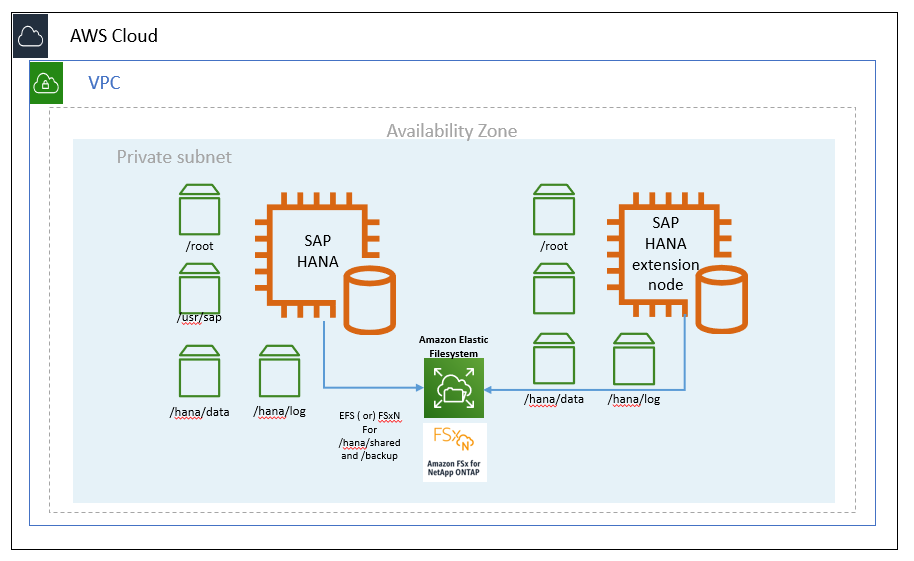Warm Data Tiering Options
The following sections discuss the warm data tiering options you have on AWS.
SAP HANA native storage extension
SAP HANA Native Storage Extension (NSE) is a solution to store your warm data in SAP HANA. NSE manages warm data in a special area of SAP HANA memory (buffer cache) that is separate from the SAP HANA hot and working memory areas. The NSE solution is managed at the SAP HANA layer, making it independent of other warm data solutions (such as Data Aging). Refer to the following SAP Notes for more information about NSE (requires SAP portal access).
SAP HANA Dynamic Tiering
SAP HANA dynamic tiering is an optional add-on to the SAP HANA database to manage historical data that can be used for your native SAP HANA use case. The purpose of SAP HANA dynamic tiering is to extend SAP HANA memory with a disk-centric columnar store (as opposed to SAP HANA’s in-memory store) for managing less frequently accessed data. In this disk-centric solution, dynamic tiering service (extended storage service - esserver) runs on a separate dedicated server. The main use case for dynamic tiering is to offload less active data from SAP HANA memory to the dynamic tiering disk-backed store. As noted in the solution table, SAP HANA dynamic tiering:
-
can only be used for native SAP HANA use cases.
-
provides online data storage in extended store, available for both queries and updates.
-
is fully validated and supported on the AWS Cloud beginning with SAP HANA 2 SPS 2.
-
is an integrated component of the SAP HANA database and cannot be operated separately from the SAP HANA database.
-
allows you to store up to 5 times more data in the warm tier than in your hot tier.
Figure 1: SAP HANA dynamic tiering on AWS (single-AZ)

Figure 2: SAP HANA dynamic tiering on AWS (multi-AZ)

SAP HANA Extension Node
SAP HANA extension node is a special purpose SAP HANA worker node that is specifically set up and reserved for storing warm data. An important difference between SAP HANA dynamic tiering and SAP HANA extension node is that the extension node is a separate SAP HANA instance. It is not a separate esserverprocess like dynamic tiering. Because of this, the SAP HANA extension node offers the full feature set of the SAP HANA database. SAP HANA extension node allows you to store warm data for your SAP Business Warehouse (BW) or native SAP HANA use cases.
The total amount of data that can be stored on the SAP HANA extension node ranges from 1 to 2x of the total amount of memory of your extension node. For example, if your extension node had 2 TB of memory, you could potentially store up to 4 TB of warm data on your extension node.
Figure 3: SAP HANA extension node on AWS

Data Aging
Data aging